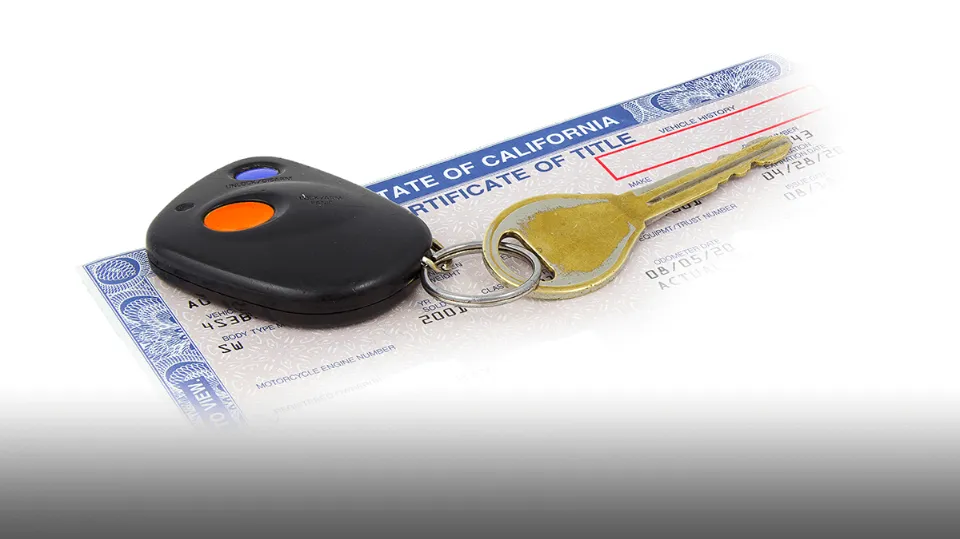An official document proving ownership of a vehicle is the title. The Department of Motor Vehicles (DMV) of the state issues it. The name on the title must be changed or transferred from the prior owner to the new owner before a car can be purchased or sold.
So, how to sign over a car title? Release Ownership of the Vehicle, Create a Bill of Sale, and Take the Signed Title to the DMV.
Continue reading to find out more.
What is a Car Title?
A car title is a state declaration that informs you that you are the legal owner of a particular car. The title should preferably include the vehicle identification number (VIN) as well as the make, model, year, color, and mileage at the time of purchase. It also includes the seller’s signature, the state officer’s signature, your name and address, and the date of issue. If you still have a loan, the title will also contain information.
Transferring a Car Title over to Another Party Can Be Challenging
Although obtaining a title transfer document isn’t difficult, both buyers and sellers must put in a lot of effort. Officiating a vehicle transfer is more time-consuming than expensive, involving plenty of paperwork and running around to make sure the documents get to where they need to be.
What makes this process even more frustrating, especially for folks who move frequently, is that every state has different requirements. Before a vehicle can be sold, some states require it to pass an emissions test and inspection.

How to Sign over a Car Title?
In most cases, signing over a car title is simple. You can sign over a car title with the following steps:
Release Ownership of the Vehicle
The seller can release ownership of the car by signing the title. It’s important that the person listed as the owner on the title is the one to sign it. If the vehicle’s title has more than one name, both people listed need to sign it when releasing ownership.
This is not the case if the title lists the first person’s name and then the word “or” followed by the second person’s name. This indicates that the title can be signed over by either party. If the title says the first person’s name followed by the word “and” before listing the second person’s name, then both parties must sign the vehicle title.
Create a Bill of Sale
Some states require a bill of sale when you transfer a car title. It may be a good idea to always create a bill of sale, just in case. A bill of sale is a record that details your purchase price for the new or used car and provides that information to the Department of Motor Vehicles. This purchase price will then be used by the DMV to compute sales taxes.
When you buy a car from a dealership, the taxes are already included in the price. But when you buy a car from a private seller, you also have to pay sales tax on top of the purchase price.
Take the Signed Title to the DMV
After signing, the buyer takes the title to the DMV to register the car. A new title and registration are then created by the state using this document. The buyer’s price for the new car and its current odometer reading may be requested by the DMV, among other details about the vehicle. To avoid fines, it’s crucial to provide the DMV with accurate pricing information and odometer disclosure.
The purchaser ought to be given a temporary registration the same day they visit the state’s department, provided they bring all the required paperwork. Within a few weeks, they ought to receive a formal new title in the mail. Costs associated with title transfers will also be borne by the buyer. The specific amount usually depends on the vehicle’s sale price. The costs differ significantly between states as well. For instance, a Texas title fee also includes a fee for the vehicle inspection. Depending on whether you purchase an in-state or out-of-state vehicle, California’s title fee varies.

How to Sign over a Car Title in Unique Situations ?
Sometimes it can be more difficult to sign a car title, especially if the owner has passed away or the vehicle is subject to a lien. Here are some uncommon scenarios that a seller might run into.
Signing over a Car Title When Buying from a Dealership
When you buy a new or used car, the dealership will probably handle all of the paperwork. It comprises every process of the title transfer procedure. You might not even need to visit the DMV in person if you purchase from a dealership. The title will instead be mailed to you. If you sell your car to a dealership, the process is similar.
Signing over a Car Title When Buying from a Private Seller
If you buy a car from a private seller, you must complete the title transfer process as the seller. On the title, the seller’s signature must be in blue or black ink. The title should then be delivered by the purchaser to the nearby registration office, duly signed.
Signing over a Car Title When There’s a Lienholder
A bank or moneylender who owns the title to a car is referred to as a lienholder. When you borrow money to buy a car, the lender keeps ownership of the vehicle until the loan is repaid. You can still sell your car even if you still owe money on it, but you must first settle the loan. You might be charged by your lender if you pay off the car early. The process is handled differently by each lender. It’s critical to get in touch with the lienholder to find out what procedures you must follow when transferring the title of your car.
Signing over a Car Title Between Family Members
You need to sign the title to transfer ownership, even if you give the car to a relative. Many states still advise having a bill of sale that includes the previous owner’s name, the car’s mileage, and the buying price. You can enter $0 as the purchase price for a gift car. The cost of the title transfer, however, might be borne by the family member.
Signing over a Car Title After Paying Off a Loan
You’ll receive the title from the lender once you’ve paid off your car in full. After your final payment, some lenders might automatically provide you with the title for the vehicle, but others might not. By submitting them a paid-in-full receipt, you can ask for the title.
Signing over a Car Title When the Current Owner is Deceased
If the owner of the vehicle passes away, transferring the title might be more difficult. Therefore, the owner’s beneficiary or executor should submit an application to their state government for a new title. The application for a new vehicle title and a copy of the will may be submitted by the beneficiary. The beneficiary will receive the new ownership document from the state. Then, they can sell it to a new owner with their signature on the title.

Other Factors Affecting Car Title Transfers
Other events and transactions that affect a vehicle’s title besides buying and selling it are possible. These consist of giving a car to a family member, paying off a loan, giving a car away, inheriting a car, and changing your name legally. Since each state is different, the DMV can advise on procedures and policies for the various circumstances.
Additionally, when transferring a title, make sure the vehicle identification number (VIN) on the title matches the VIN on the vehicle. The lower left corner of the windshield, where the VIN plate is located, is typically visible from the outside of the car.
Make sure the information on the title corresponds with the car’s odometer reading if the seller is required to provide one as part of the title transfer process. Even if it doesn’t exactly match, it should be close. Additionally, the mileage on the car’s odometer should always match the amount stated on the title.
Finally, it is always a good idea to use a pen with black or blue ink when transferring a title as a seller or a buyer because it is more difficult to change any information after it has been recorded.
When to Sign over the Car Title
You should be aware of when to sign a car title before learning how to do it.
When you sell your car, you must transfer the title to the new owner. Signing over your car title is vital because the buyer will require it to register the car at their local DMV office. The title to the car serves as ownership documentation and contains the data listed below.
- The owner’s name
- VIN
- Make and model of the car
- Mileage
The Department of Motor Vehicles will supply the original title to you. When selling to a private person or a dealer, the vehicle must have an official title. If your car title is lost or unavailable, you will need to request a new registration at the DMV office. This documentation serves as evidence that you are the car’s registered owner and that you have permission to sell it.

Tips for Signing over a Car Title
A car title transfer can take longer if you sign it improperly or without all the documentation required by your state. Here are a few tips for signing over a car title:
Find Out Your State’s Requirements
The seller simply signs the title in some states, and the buyer simply takes it to the DMV to register the vehicle. However, when it comes to transferring ownership, other states might have more formal documentation requirements. For example, some states may require that the buyer also have a bill of sale present. The car title must be signed by the seller in the presence of a notary public in some states in order for it to be considered an authentic document.
Additionally, the requirements for where the seller signs may differ between state DMV offices. Make sure you’re signing on the correct line before proceeding because doing so will render the title of the vehicle void. This could extend the timeline and cause unneeded delays. Check your state’s DMV website if you’re unsure where to sign.
Don’t Put Off the Vehicle Transfer for Too Long
It’s crucial to file the title transfer documents as soon as possible by going to your local Department of Motor Vehicles. Many states have a 30-day time limit for car title transfer, but this can vary between states.
Use Or Black Or Blue Pen When Signing a Title Transfer
A black or blue pen should always be used to sign the title of the vehicle, whether you are the buyer or the seller. This improves readability while making it more difficult for others to edit the signature. If you make a mistake, don’t try to fix it by crossing it out or using correction tape or fluid. Your title will typically be void as a result, and you will need to ask for a new one.
Double-Check the Vehicle’s Information
Double-checking the information when signing over the car title can protect both the seller and the buyer during the transaction. Verify that the vehicle’s VIN number matches the one on the title. You’ll also want to check that the car’s odometer reading matches what’s on the title too. While a little variation is acceptable, the odometer reading should never be lower on the car’s title than what shows on the vehicle.
Consider Accompanying the Buyer to File the Title
Although you sign the title, the property still remains yours until the buyer registers it with the state department. You are still in charge of the vehicle until the buyer delivers the signed title to the Department of Motor Vehicles. You can ensure that the buyer registers the vehicle in their name by accompanying them to the DMV.
A title must be signed and submitted to the state department in order to transfer ownership of a vehicle. Usually only requiring one visit, the procedure is straightforward.

FAQs
What Happens If You Don’t Transfer a Title Within 10 Days?
The majority of states give prospective car buyers 10 days to change the title into their name. They might suffer the effects if they don’t. If you don’t promptly transfer the title, the dealership where you bought your car might charge you a late fee.
If you wait more than ten days, your state’s DMV may put a hold on your registration, which would prevent you from receiving license plates or tags until the title has been transferred.
In addition, if you are stopped by the police, they might issue you a ticket for operating an unregistered vehicle. Therefore, in order to avoid any potential issues, it’s crucial to make sure you transfer the title within the allotted time frame.
Can I Just Sign a Car Title to Someone?
The title must be transferred to the buyer when you sell a car. This change in ownership enables the new owner to register the car in their name and purchase insurance for it.
Signing over a car title is a pretty straightforward process, but there are a few things you’ll need to keep in mind.
Make sure the person you are signing the title over to is first authorized to operate the vehicle. The vehicle cannot be registered in their name if they are not.
Second, you must confirm that the title is free and clear of all liens and encumbrances. Before you transfer the title, make arrangements to pay off any outstanding debts if there are any.
Finally, before you sign anything, make sure that you have all of the required documentation, such as the bill of sale and the odometer reading, in order. Simply put your name on the line after everything is in order, then turn over the keys.
Can You Transfer the Title of a Financed Car?
If you finance a vehicle, the lender will keep the title until the loan is repaid in full. This is to safeguard their financial investment in the event that they have to seize the vehicle as a result of your loan default.
Once you’ve paid off the loan, the lender will send you the title with their name removed and your name added as the sole owner.
If you sell the car before paying back the money, you need to transfer the ownership to the new car owner and take them as the lien holder. This can be done through your local vehicle management office. You need to provide the information of the new owner, as well as the insurance certificate and payment of any applicable fees.
The updated title will be sent to you and the new owner by the DMV once everything has been processed.
What Should I Do If I Have a Signed Title, But No Bill of Sale?
A bill of sale is something you should receive when buying a car from an individual. This document is crucial because it attests to the fact that you are the vehicle’s new owner. The seller’s name should be printed on the bill of sale along with crucial details about the transaction, including the purchase price and any restrictions or warranties that apply to the car.
You might occasionally get a title that has been signed by the seller but no bill of sale. In this situation, you should inquire about the requirements at your neighborhood tag and title office. The majority of the time, a signed title with a mileage declaration suffices as proof of ownership.
A bill of sale that has been signed will be part of the transaction process when you purchase a vehicle through PrivateAuto.
What is a Transfer of Ownership Form?
A transfer of ownership form is a legal document that is used to transfer property ownership from one person to another. The form must be signed by both the seller and the buyer, and it must be notarized by a Notary Public. The date of the transfer, the owner names and addresses of the parties involved, a description of the property being transferred, and the signatures of witnesses must also be listed on the title.
The form might occasionally also need to be registered with the state or local government. A transfer of ownership form is a simple way to ensure that the property is transferred legally and without any problems.
Summary: How to Sign over a Car Title?
The seller is required to give the title to the buyer when selling a car.
When transferring a car title, the old title must typically be signed in order for the buyer to get a new title issued in their name.
If you have a car loan, you must inform the lender of the title transfer and you might have to make a full payment on your loan.
If you have any questions, please leave a comment. KV Auto tries to give you the best car industry information. Thank you for reading.





